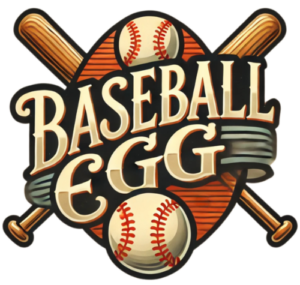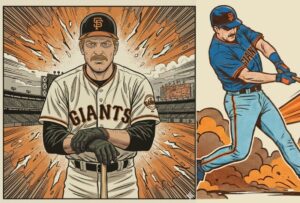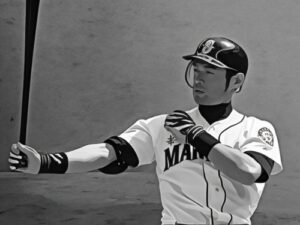Dave Roberts may have thought he was doing Clayton Kershaw’s legacy a favor when he kept the pitcher in Game Five of the 2019 NLDS to start the eighth inning against the Nationals.
Two swings and two home runs later, the game tied, Kershaw’s postseason narrative remained a poor bedtime story, a nightmare rather than a “happily ever after.”
The three-time Cy Young Award winner and former MVP was forced to take an embarrassing walk to the dugout after he surrendered two big flies to the Nationals that erased a lead and plummeted the Dodgers season into doubt. And as he took that walk, Kershaw heard something unusual: boos. He heard boos from the LA crowd, who suddenly realized a third straight trip to the Fall Classic was looking grim.
Kershaw’s failures in the 2019 playoffs were the latest in a puzzling postseason history for the southpaw. In the regular season, Kershaw is The Claw. In the postseason, he’s more like The Wounded Paw.
In the 2020 postseason, Kershaw has had mixed results. In his two starts in the NLDS and NLCS, the lefty allowed seven runs in 11 innings, including three homers. In the Wild Card Series game against the Brewers, Kershaw was masterful in eight shutout innings. In Game One of the World Series, he was on track again, tossing six innings and allowing only one earned run as he captured his second victory in the Fall Classic.
Still, Kershaw’s postseason record is a heavy weight hanging around his unshaven neck. While he’s certainly one of the 100 greatest pitchers in baseball history, his record in the playoffs and World Series might be the least effective of any of the great pitchers.
Kershaw’s postseason record
| G | W | L | IP | H | R | ER | HR | WHIP | ERA | |
| Quality Starts | 16 | 10 | 4 | 106.1 | 62 | 23 | 20 | 9 | 7.0 | 1.69 |
| Non-Quality Starts | 13 | 2 | 8 | 67.0 | 80 | 63 | 61 | 16 | 13.8 | 8.19 |
| In Relief | 7 | 0 | 0 | 10.0 | 6 | 5 | 5 | 3 | 9.9 | 4.50 |
| Total Postseason | 36 | 12 | 12 | 183.1 | 148 | 91 | 86 | 28 | 9.8 | 4.22 |
Kershaw has now pitched essentially an extra season in the postseason: 29 starts. But he’s been a Jekyll and Hyde: in almost half his starts he’s failed to produce a quality start. In those 13 starts, The Claw has a dreadful ERA of 8.19, and most troubling: his team is 4-9 in those crucial games. The Dodgers are only 16-13 in his 29 starts in the postseason, hardly what you want from a once-in-a-generation ace.
Kershaw will one day accept a plaque in Cooperstown, but when that day comes, will he still have the stigma of being a putrid postseason performer?
Where do Kershaw’s postseason woes rate in baseball history? In an attempt to answer that question, I looked at some of the greatest pitchers of all-time, comparing their regular season ERA with that same stat in the postseason. Because innings pitched are a result of opportunity and I wanted to measure volume, I figured how many earned runs below or above their regular season performance the pitcher allowed in their postseason career.
The chart below shows how each pitcher performed against himself. Even though Tom Seaver pitched just about as well in the postseason as he did in the regular season and only performed a fraction of a run better than his established level, he was still a valuable pitcher in the postseason, because he was compared against regular season Tom Seaver.
Postseason ERA compared to Regular Season ERA
The chart below shows most of the pitchers bandied about as all-time greats, with a few other notables who make an interesting contrast with Kershaw.
PITCHER |
ERA |
PS ERA |
IP |
+/- RUNS EXPECTED |
|---|---|---|---|---|
| Curt Schilling | 3.46 | 2.23 | 133 | -18.1 |
| John Smoltz | 3.33 | 2.67 | 209 | -15.3 |
| Orel Hershiser | 3.48 | 2.59 | 132 | -13.1 |
| Christy Mathewson | 2.13 | 0.97 | 101 | -13.0 |
| Madison Bumgarner | 3.13 | 2.11 | 102 | -11.6 |
| Sandy Koufax | 2.76 | 0.95 | 57 | -11.5 |
| Fernando Valenzuela | 3.54 | 1.98 | 63 | -11.0 |
| Bob Gibson | 2.91 | 1.89 | 81 | -9.2 |
| Lefty Grove | 3.06 | 1.75 | 51 | -7.4 |
| Carl Hubbell | 2.98 | 1.79 | 50 | -6.6 |
| Tom Glavine | 3.54 | 3.30 | 218 | -5.7 |
| Jim Palmer | 2.86 | 2.61 | 124 | -3.4 |
| Justin Verlander | 3.33 | 3.20 | 163 | -2.4 |
| Juan Marichal | 2.89 | 1.50 | 12 | -1.9 |
| Nolan Ryan | 3.19 | 3.07 | 58 | -0.8 |
| Tom Seaver | 2.86 | 2.77 | 61 | -0.6 |
| Warren Spahn | 3.09 | 3.05 | 56 | -0.2 |
| Walter Johnson | 2.36 | 2.52 | 50 | +0.9 |
| Greg Maddux | 3.16 | 3.27 | 198 | +2.5 |
| Bob Feller | 3.25 | 5.02 | 14 | +2.7 |
| Randy Johnson | 3.29 | 3.50 | 121 | +2.8 |
| Max Scherzer | 3.20 | 3.60 | 95 | +4.2 |
| Pedro Martinez | 2.93 | 3.46 | 96 | +5.7 |
| Zack Greinke | 3.35 | 4.58 | 70 | +9.6 |
| Roger Clemens | 3.12 | 3.75 | 199 | +13.8 |
| Clayton Kershaw | 2.44 | 4.43 | 158 | +34.9 |
Wow. Note that Kershaw rates almost 35 earned runs above his expected level of performance, by far the highest figure in history. Or put another way, Kershaw has been the biggest disappointment in the postseason among the great pitchers in the history of the sport.
Another active pitcher rates pretty poorly, Zack Greinke.
If Kershaw wasn’t so bad in the postseason, would we be talking about Roger Clemens? Not really, because Roger’s performance in the postseason isn’t dreadful. He rates lower among these pitchers because he pitched slightly worse than his regular season level and he pitched almost 200 innings, so his underperformance adds up.
Kershaw rests alone in the deep trenches of postseason stinkiness. If we look strictly at postseason ERA compared to regular season, Kershaw is almost two runs above. That figure is the worst among pitchers with at least 50 innings in the postseason. The only other pitchers I could find who pitched a minimum of 50 innings in the postseason and had an ERA at least one run higher than their career ERA, are Bret Saberhagen, Greinke, and Vida Blue. Kershaw’s 158 innings are double any of those pitchers in the postseason.
Yes, Clayton Kershaw is a great pitcher, he has the hardware and regular season numbers to prove it. But he is also the “worst great pitcher” in the postseason that we’ve ever seen.






